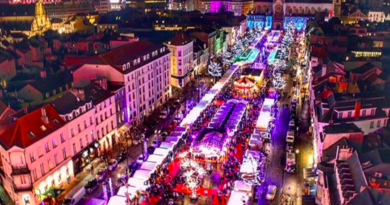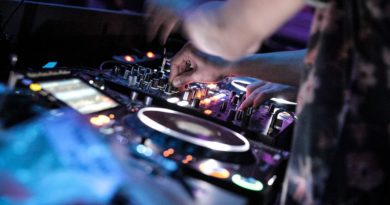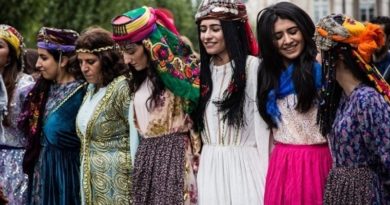60 years ago the painter Mark Rothko visited Brussels
After emigrating from Daugavpils, Latvia, when he was 10 years old, Mark Rothko returned to continental Europe only three times in his life: in 1950, 1959, and in 1966 — in early 1961 he made a very short trip to England to install an exhibition of his paintings at the Whitechapel Gallery in London.
During his second trip, in July of 1959, he visited Brussels. The journey began in Naples and went on to include destinations such as Pompeii, Paestum, Rome, Tarquinia, Venice, Florence, Chartres, Lascaux, Paris, among many others. I became aware of all this last month, when I visited the Mark Rothko exhibition at the Kunst Historisches Museum in Vienna, which showed a selection of works spanning his whole artistic career. From the early, figurative paintings of the 1930’s and 40’s, to his more reflective and abstract canvases of the late 50’s and 60’s. Rothko’s children, Kate and Christopher, were closely involved in the exhibition’s design and some of the paintings were on loan from their own private collections.
At the end of a long hallway, where three of Rothko’s paintings from the late 1940’s were exhibited, I saw a large reproduction of the Queen Elizabeth’s logbook on the wall. Queen Elizabeth was the name of the ship on which Rothko had returned to the United States after his 1959 trip to Europe. “Names and descriptions of alien passengers embarked at the port of Southampton,” appeared at the top. The date of departure was 20th of August, 1959, and the destination New York. With ticket number C.60073, the name of Mark Rothko is typed in capital letters, followed by those of his wife Mell and daughter Kate, all of them reported as being “In Transit from Brussels.” The line intrigued me. Why in transit? I had never known that Rothko had spent time in Brussels. What had he seen and done during his stay?
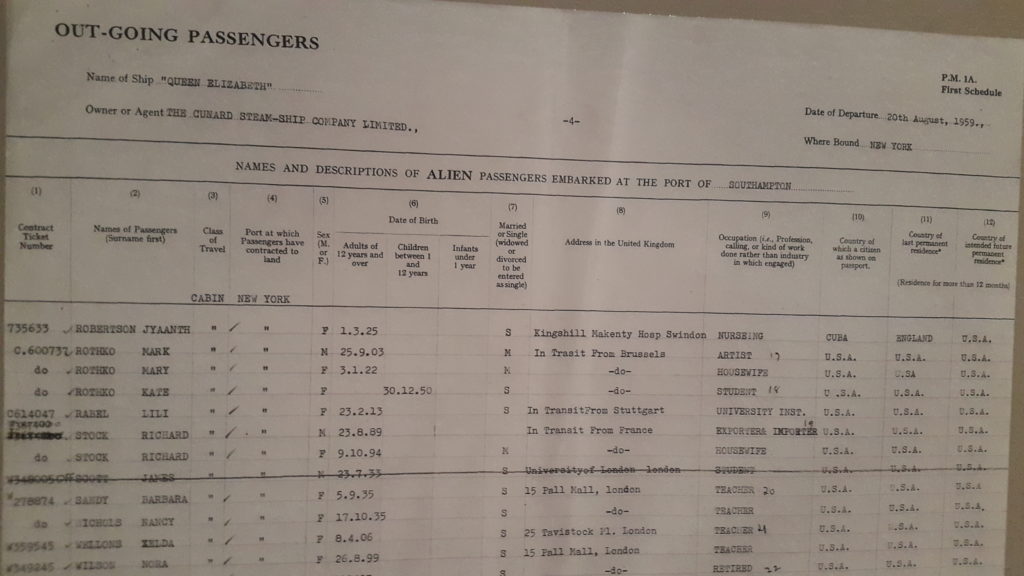
The journey started on June 15th, 1959, when the family sailed, tourist class, on the USS Independence, which seven days later called in at the port of Naples. Rothko had been counting the days to pack his suitcase and leave on vacation. The year before, 1958, he had been working on one of the most important series of paintings ever commissioned to him, The Seagram Murals, which were destined for the restaurant of the Four Seasons hotel. The building had been designed by Philip Johnson and Mies van de Rohe, two of the most renowned architects of the time. Rothko eventually refused to bring the project to completion and broke his part of deal — he gave back the advance in a fit of disgust stating, “Anybody who will eat that kind of food for those kinds of prices will never look at a painting of mine.”
At the Kunst Historisches Museum I was able to see one of the Seagram Murals, currently at the National Gallery of Art in Washington, as well as several of the mural sketches he painted during the preparation period for the commission. Many scholars believe that the style that came to characterize Rothko’s late paintings, including the Seagram Murals, was deeply marked by something that Rothko saw during his first trip to Florence in 1950: Michaelangelo’s Laurentian Library.
Early in his career Rothko had been fascinated by Greek myths, the construction of temples, the origins of European art. At the Metropolitan and at the Modern Museum of Art (MoMA) in New York he sat for hours studying Rembrandt, Vermeer, Miro, Matisse, all of them revered by the native of Daugavpils. The soft brush strokes, the ephemeral vanishing light so characteristic of his canvases are reminiscent of Pierre Bonnard’s work, which Rothko is known to have seen in 1948 at the MoMa. At the Kunst Historisches Museum some of the paintings reveal the undeniable influences, the colors, the motives and the exploration of techniques.
His attitude towards European art changed, however, as attested by what his close friend, the poet Stanley Kunitz, recalled when describing the painter’s “vehemence about the European scene, his flat rejection of it.” This was the mid 1950’s. Stanley Kunitz, who wrote poetry until he was a hundred, was also Jewish and knew Rothko well. Life seemed to have joined the paths of these two talented yet darkened-by-tragedy souls: both of them had grown up without a father — Kunitz’s had killed himself six weeks before Stanley was born, while Rothko’s had died of colon cancer when Rothko was only 10. By the time Rothko boarded the USS Independence in 1959 they had become so close that Kunitz was listed as one of the beneficiaries in Rothko’s will – the others were Rothko’s two brothers, his sister Sonia, Mell’s two sisters, and the sculptor Herbert Ferber.
As time went by, Rothko’s ambivalent attitude towards European art seemed to become more intense. Kunitz recalled him saying, “We have wiped the slate clean. We start anew. A new land. We’ve got to forget what the Old Masters did.”
In Brussels, Rothko met with the Belgian painter and poet, Anne-Marie Levine, who invited him over for dinner. Levine’s father, upon meeting Rothko, suggested that he ought to see some of the great works of art the country had to offer, for instance Rubens, Brueghel, Ensor. Rothko shrugged and declared that he was “not interested in painting.”
Rather than seeing Belgian art, Rothko had a different motivation to come to Brussels: his nephew Kenneth Rabin was living there. Kenneth was Sonia Rothko’s son, who had started a career in the US Foreign Service in 1955. After serving in Canberra and Perth, he was posted to Brussels for a number of years before moving to Manila. It was thanks to the postcards that Rothko had sent to his nephew that a great part of his journey can be outlined — he sent a postcard to Kenneth from Venice indicating he expected to be in Paris on July 15th and shortly after he would leave for Brussels. I found myself wanting to know more about Kenneth Rabin, the house he had lived in, what he had told his uncle about his experience in Brussels. I contacted the Jewish museum, I emailed Anne-Marie Levine, I called the US Embassy but to no avail. All I could find out was that Mr. Rabin had died in 2006 at the age of 81 in Portland, Oregon, the city where Rothko had moved to after leaving Latvia in 1913.
The 10-year-old boy’s first experiences in America were not easy. On the train journey from New York to Oregon, he had to carry a sign around his neck that read, “I don’t speak English.” A few months later his father died. All of these events marked the artist’s view of the world, all of which can be seen in the way he chose to express his wounded sensibility on the canvas. In 1958, during a lecture at the Pratt Institute, he said that the main ingredient of his work was “a clear preoccupation with death, the intimations with mortality.” He was forever interested in the spiritual, in the tragic nature of existence which he understood to be a part of his life.
***
From the second floor of the Royal Library of Belgium I can see pigeons perched on the shoulders of King Albert’s statue. On the esplanade, long-haired teenagers push off from the ground with one foot and gain speed before crouching on their skateboards for a moment, then they jump. The noise bounces off the building nearby. A group of chatty and distracted tourists follows a woman holding an unopened umbrella high in the air. I stand by one of the large windows in the periodicals section of the library with one goal in mind: find out if the Belgian press reported anything on Rothko’s 1959 visit.
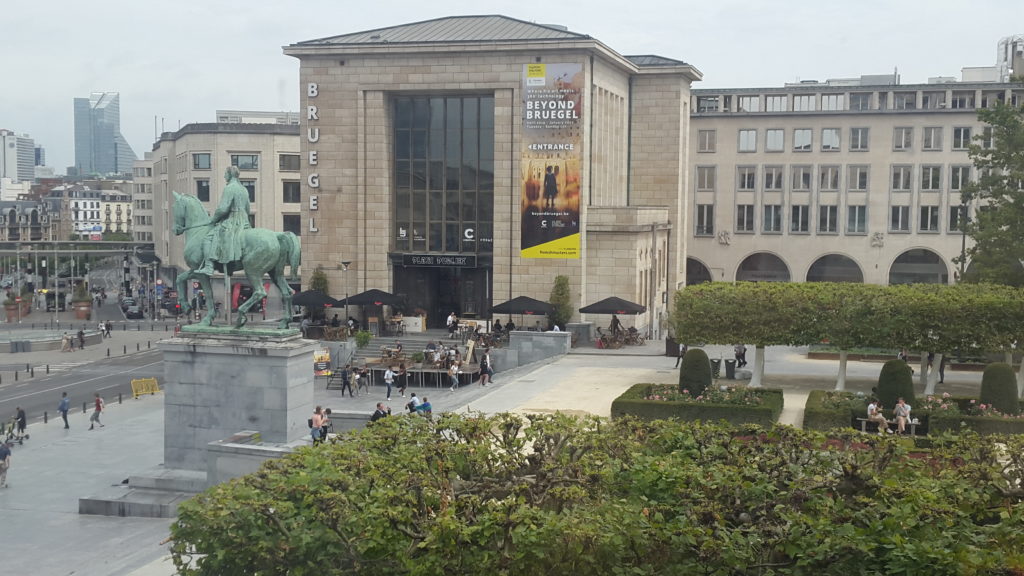
Sitting in front of a table equipped with a magnifying glass and a small projector, I look at microfilmed pages of Le Soir newspaper from July of 1959. “Cyclists battle on the 46th Tour de France,” says nearly every front page. I find news of Richard Nixon’s imminent visit to Moscow, the different stages of Ethiopian Emperor Haile Selassie’s trip to Belgium. I read notes about the new slats of wood and paint for the Château Malou in Woluwe Saint Lambert, a report on the shopkeeper in Liege who tried to strangle his wife, the festivities of the Belgian National Day. I read about Fidel Castro’s accession to power in Cuba and the armed conflict in Nyasaland, but nothing about Rothko. About an hour and a half later I give up thinking that either the press didn’t know about his trip or they didn’t care enough about him at the time.
What I do wind up finding in the Royal Library is the catalogue of Rothko’s exhibition at the Centre for Fine Arts (Palais des Beaux Arts) in January of 1962, the same exhibition that Rothko had gone to set up himself in 1961 at the Whitechapel Gallery in London. A review article in Le Soir dated Tuesday January 9th, 1962, complains about the size of Rothko’s paintings stating that for American artists, painting those “skyscraper-like” canvases was in their genes.
The opening page of the Palais des Beaux Arts catalog acknowledges the generous support of John de Menil, the Franco-American businessman and philanthropist who a couple of years later would commission the artist’s final major project: The Rothko Chapel in Houston.
Towards the end of the 1960’s Rothko began to suffer from depression, a condition that would worsen because of his heavy drinking. On the night of April 20th, 1968, he suffered an aneurysm and was taken to the hospital in an ambulance. At the emergency ward the doctors detected high blood pressure, early signs of cirrhosis. The painter had suffered a “dissecting aortic aneurysm,” they determined. The days that followed were laden with anxiety and fear. Rothko became paranoid. His poor health coupled with the mood swings caused the relationship with his wife Mell to deteriorate and on January 1st, 1969, the couple split up for good. A little over a year later, on the morning of February 25th, 1970, his body was found in a pool of blood in his 69th street studio in New York. He had taken his life.
At the Kunst Historisches Museum I sat in front of one of the Seagram Mural sketches and admired the colors for a long while. Ruby and burgundy bleeding in and out of each other. I couldn’t stop staring at it. In the silence of the room I thought of Stanley Kunitz’s poem, The Artist, which he wrote after the death of his friend:
His paintings grew darker every year.
They filled the walls, they filled the room;
eventually they filled his world –
all but the ravishment.
When voices faded, he would rush to hear
the scratched soul of Mozart
endlessly in gyre.
Back and forth, back and forth,
he paced the paint-smeared floor,
diminishing in size each time he turned,
trapped in his monumental void,
raving against his adversaries.
At last he took a knife in his hand
and slashed an exit for himself

